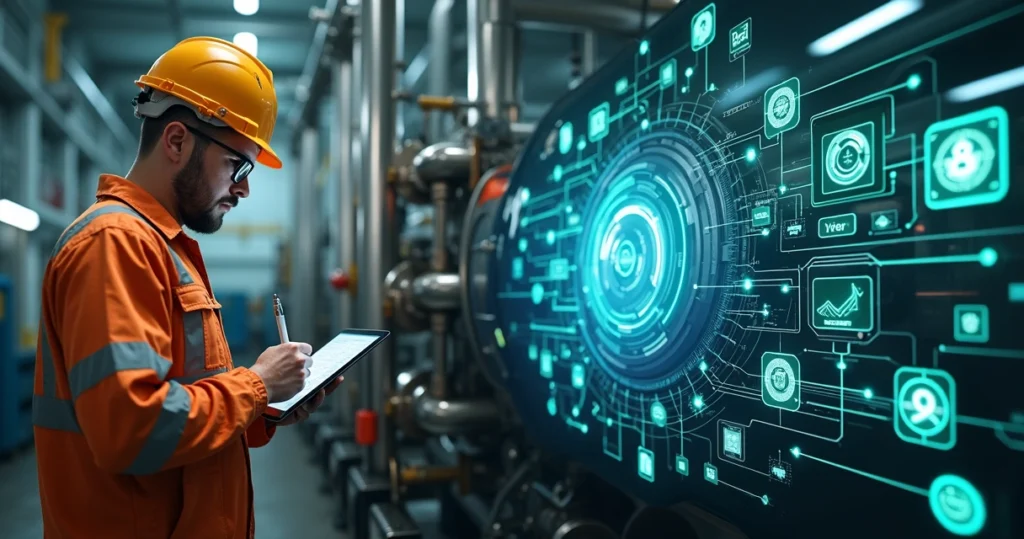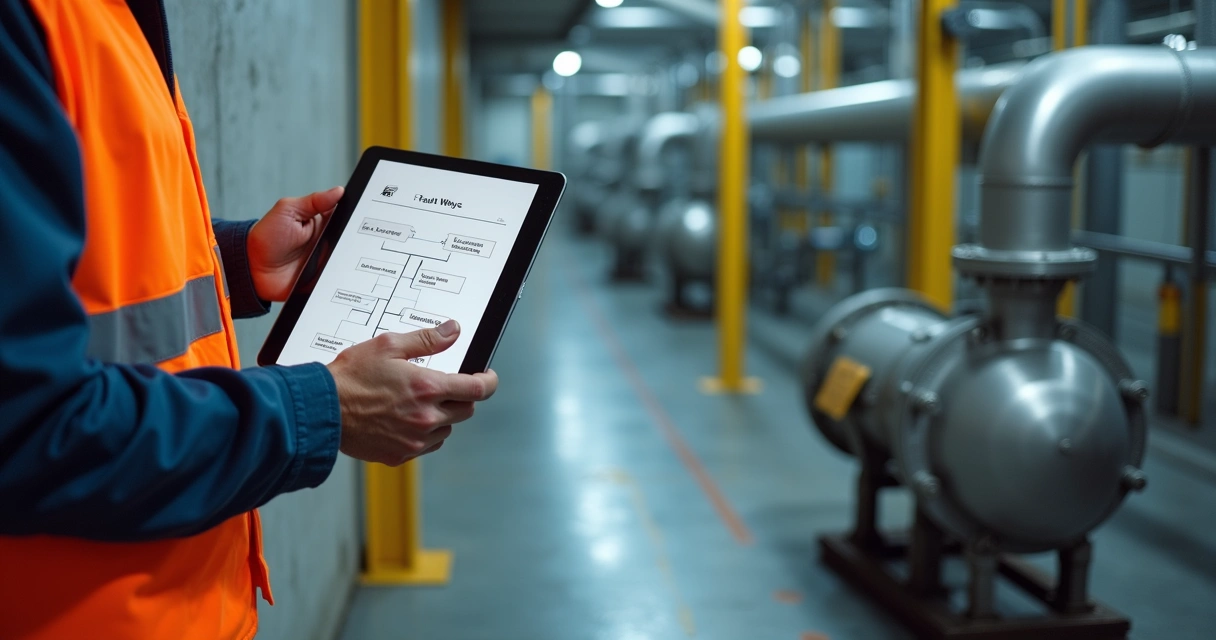Human vs. AI Diagnostics: Which Helps Faster Repairs?

I still remember a night shift when a line stopped with a dull thud. The senior tech pressed a hand to the housing and whispered, “Bearing.” The screen beside him flashed warnings and probabilities. Two paths, one goal. Get the asset back fast.
Speed is not only a stopwatch. It is less guessing, fewer handoffs, and clear proof you fixed the right thing. So which wins for quick repairs, people or AI? The short answer is awkward. It depends on the fault, the data, and how well both sides work together.
Where people are quick
Skilled technicians carry patterns in their heads. They notice the tiny scrape at startup or the smell of hot insulation. That kind of tacit signal often beats a dashboard during the first minutes of a fault.
- Context in seconds. A person knows last week’s rebuild, the vendor’s quirks, and the operator who baby-sits the line.
- Hands on the asset. Touch, listen, tighten, bypass, and see what changes. Small tests, fast feedback.
- Creative workarounds. When parts are late, a tech may shim, swap, or re-route to buy time, safely.
- Risk sense. People feel when a step is off. It is not perfect, but it prevents silly mistakes.
Experience feels instant.
Where AI is quick
Now the flip side. AI does not get tired. It checks every sensor, past incident, and maintenance note in a blink. A tool like Prelix links failure modes to symptoms, runs a near-instant 5 Whys, and drafts a clean report. That shaves hours when the clock hurts the most.
- Signal scanning. It compares live data to thousands of traces and spots early drift.
- Instant root cause paths. Auto-generated 5 Whys trees and fault diagrams cut the “where do we start” time.
- Triage and priority. It ranks alerts by impact on safety, cost, and downtime risk.
- Recall without limits. Every similar failure since last year is there, not lost in an inbox.
- Compliance-ready notes and attachments, which speeds signoff and audits.
If you want a deeper look at AI-backed root cause methods for plants, Prelix shares a helpful guide in English on AI-powered RCA for industrial teams and also a practical RCA guide for industrial teams. There are Portuguese versions too for teams that need them: a Portuguese AI RCA guide and a Portuguese practical guide. The Prelix blog keeps fresh lessons from the field.

The clock test: a simple timeline
Picture a pump trip at 10:00.
- 10:01 alert. AI flags the trip, suggests cavitation or seal wear. A human hears it and thinks “suction side.”
- 10:04 triage. AI tags impact as high and pushes a checklist. A human radios ops to check upstream valves.
- 10:12 diagnosis. AI overlays suction pressure drift for three days. The tech inspects strainers and finds debris.
- 10:25 parts and plan. AI lists required gasket set from past jobs. The tech confirms size and requests a runner.
- 10:55 repair. Crew swaps the seal and clears the line.
- 11:20 closeout. AI drafts the 5 Whys and the risk note. The tech adds two photos and signs.
In a human-only run, steps 2 and 3 can take longer if trends are buried in separate screens. In an AI-only run, physical checks still need people, so the bottleneck returns. AI plus human cuts the loops. Not always by half, but often enough to matter.
Data quality, bias, and the messy middle
Fast is fragile if the inputs are wrong. Garbage in still gives garbage out. If sensors drift or logs are empty, AI will be confident in a bad path. People have their own traps. We anchor on the last failure and skip a step we think we know. So we need guardrails.
- Trust but verify. Pair AI suggestions with one quick on-asset check. Touch, measure, confirm.
- Fix the data pipe. Calibrate sensors, label points, and keep timestamps clean.
- Short feedback loops. When a cause is wrong, tell the system and close the loop.
Prelix leans into this by folding field feedback into new suggestions and auto-updating diagrams. It helps the tool learn your plant, not a generic one. I like that, because plants are full of quirks.
How to blend people and AI for speed
Here is a simple playbook you can start tomorrow. Nothing fancy.
- Let AI watch first. Use it for early anomaly and ranked causes. Keep alert rules clear.
- Assign fast checks. Technicians run two or three physical checks that confirm or kill the top suggestion.
- Standard work for thinking. Use a short 5 Whys every time, even for “easy” fixes. Prelix can write and draw it for you.
- Close the record once. Draft with AI, then a person adds the nuance and signs.
- Learn in public. Share wins and misses in morning meetings. Small stories spread fast.

What to measure if you want faster fixes
- Time to diagnosis. From alert to first confident cause. Aim to shrink this first.
- Mean time to repair. Keep it paired with cause accuracy, not alone.
- First-time fix rate. Did the line stay up for a week after the work order?
- Rework count. How often do you reopen the same asset within 30 days?
- Report prep time. Minutes to produce a clean incident and compliance report.
You may also watch alert load per person. Too many pings slow everyone. Tune the rules and move on. I have seen days where silence is a gift.
A quick word on Prelix
Prelix turns failure signals into clear causes, diagrams, and ready-to-send reports. It plugs into your maintenance stack without drama and helps teams act with less back-and-forth. Instant diagnosis, automatic 5 Whys, and smart documentation cut waiting time and reduce rework. When plants ask for speed and safer choices, this is the kind of help that sticks.
Conclusion
Humans rush toward the asset with intuition and grit. AI sifts the noise and points at likely roots in a blink. Alone, each can be fast. Together, they are faster more often. The real win is not only minutes saved. It is calm, clear fixes that hold.
If you want that mix on your floor, try Prelix. See how fast root cause, auto diagrams, and ready reports can change your next outage. Reach out, get a short demo, and start turning faults into better decisions.
Questions fréquemment posées
What is AI diagnostics in repairs?
It is software that reads live and historical data, matches patterns with known failure modes, and suggests likely causes and next steps. Tools like Prelix also build 5 Whys diagrams and draft clean reports so teams can act sooner.
How fast is AI vs human diagnostics?
AI flags issues in seconds and narrows causes quickly. Humans verify on the asset and make safe, practical choices. AI plus human is usually fastest, because you cut search time and keep the good judgment.
Is AI better than human technicians?
Not better, different. AI is tireless with data. People see context and touch the machine. The best results come when AI suggests and a technician confirms, adjusts, and signs off.
How much does AI diagnostics cost?
Costs vary by plant size, data volume, and features. Many teams weigh cost against reduced downtime, fewer repeat faults, and less time spent on reports. A short pilot can make the case with your own numbers.
Is it worth using AI for repairs?
For most plants, yes. Faster triage, clearer causes, and cleaner documentation save time and help safety. Start small on a critical line, learn fast, then grow if the gains hold. Prelix is built for that path.
